Home>Garden Essentials>What Happens To The Nutrients In The Soil When Crop Rotation Is Used
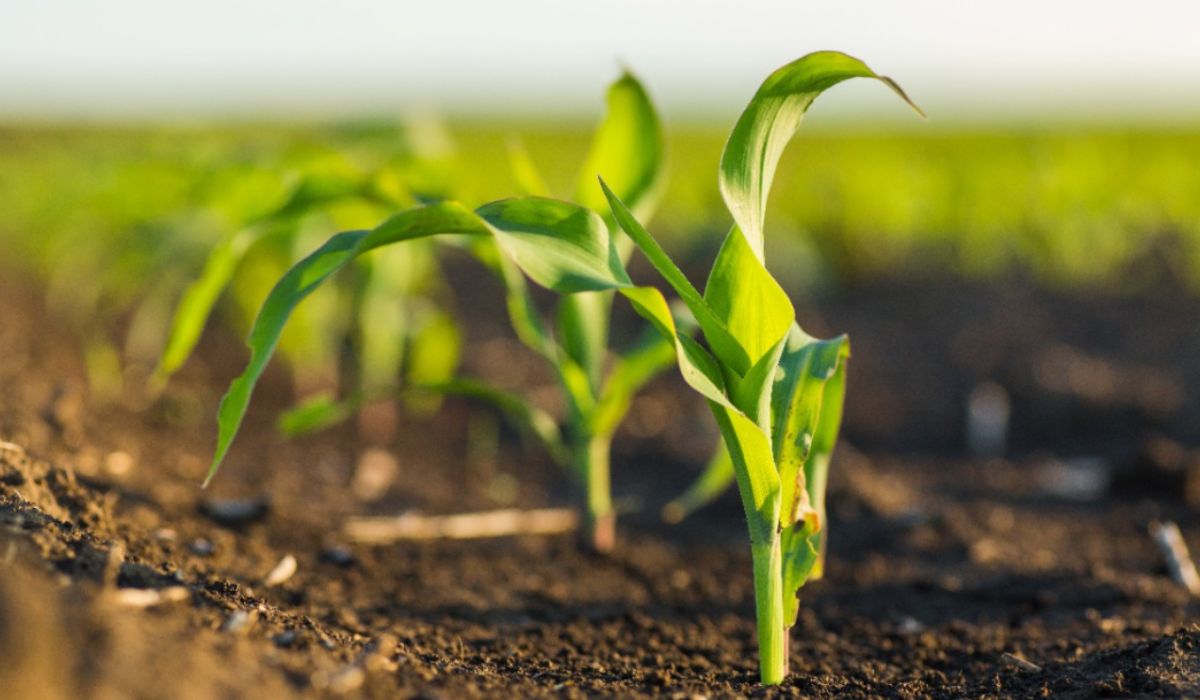

Garden Essentials
What Happens To The Nutrients In The Soil When Crop Rotation Is Used
Modified: March 16, 2024
Discover how crop rotation can impact the nutrient content of soil in your garden. Learn what happens to nutrients in the soil when crop rotation is implemented, and how it benefits your plants.
(Many of the links in this article redirect to a specific reviewed product. Your purchase of these products through affiliate links helps to generate commission for Storables.com, at no extra cost. Learn more)
Introduction
Crop rotation is a time-tested agricultural practice that involves growing different crops in a specific sequence over a defined period. It is a technique that has been employed for centuries to improve soil health, pest and disease management, and overall crop yield. By strategically rotating crops, farmers can optimize the use of nutrients in the soil, minimize the occurrence of pests and diseases, reduce soil erosion, and enhance overall soil fertility.
In simple terms, crop rotation ensures that the same crop is not planted in the same field year after year. Instead, a carefully planned rotation system is implemented where different crops are grown in successive seasons. This allows the soil to replenish its nutrient levels, reduces the buildup of pests and diseases, and creates a balanced ecosystem that supports healthy plant growth.
The benefits of crop rotation are numerous and extend beyond the immediate yield and pest management advantages. By cycling different crops through the same field, farmers can maximize the use of available nutrients, reduce the need for synthetic fertilizers, and promote sustainable agricultural practices. In this article, we will explore the impact of crop rotation on nutrient cycling in the soil, changes in nutrient availability, and the overall enhancement of soil fertility.
Understanding the intricate relationship between crop rotation and nutrient cycling is crucial for sustainable and successful farming practices. By delving into the science behind this agricultural technique, we can gain a deeper appreciation for the benefits it offers and its importance in maintaining the long-term health of our soils.
Key Takeaways:
- Crop rotation helps soil stay healthy by balancing nutrients, managing pests, and promoting sustainable farming, leading to better plant growth and higher crop yields.
- Farmers need to plan carefully and be flexible when using crop rotation to overcome challenges and ensure successful implementation for long-term benefits.
Read more: What Happens With No Crop Rotation
Definition of Crop Rotation
Crop rotation is a system of growing different crops in a specific sequence on the same piece of land over several seasons. It involves the deliberate alternation of crops, ensuring that the same crop is not planted in the same field year after year. The specific rotation pattern followed can vary depending on factors such as soil type, climate, and the specific needs of the crops being grown.
The primary goal of crop rotation is to break the cycle of pests, diseases, and weeds that can build up when the same crop is continuously planted. Different crops have different nutrient requirements, susceptibility to diseases, and vulnerabilities to pests. By rotating crops, farmers can disrupt the life cycles of pests and diseases, reducing their impact on future crops.
Crop rotation also plays a vital role in maintaining and improving soil health. Different crops have varying root systems, with some being deep-rooted and others shallow-rooted. The diversity in root systems helps to improve soil structure, prevent soil erosion, and enhance nutrient uptake. Additionally, different crops have different nutrient needs. By rotating crops, farmers can ensure a more balanced use of soil nutrients, preventing the depletion of specific nutrients and promoting overall soil fertility.
There are various types of crop rotation systems that farmers can implement, depending on their specific goals and needs. Some common rotation systems include simple rotations, where crops are alternated between a small number of different options, and complex rotations, which involve the use of multiple crops in different sequences.
In addition to breaking pest and disease cycles and improving soil health, crop rotation can also provide economic benefits to farmers. By diversifying their crops, farmers can reduce their reliance on a single crop for income. This can help mitigate the financial risks associated with market fluctuations and crop failures.
Overall, crop rotation is a powerful tool in sustainable agriculture. It helps to maintain soil health, manage pests and diseases, and promote diverse and resilient farming systems. By implementing thoughtful crop rotation practices, farmers can improve the long-term productivity and sustainability of their land.
Benefits of Crop Rotation
Crop rotation offers numerous benefits to farmers and the overall agricultural ecosystem. By systematically alternating crops, farmers can optimize the use of available resources, manage pests and diseases, reduce the reliance on chemical inputs, and improve soil fertility. Let’s explore some of the key benefits of crop rotation:
- Pest and disease management: One of the significant advantages of crop rotation is its ability to disrupt the life cycles of pests and diseases. Different crops have varying susceptibilities to pests and diseases. By rotating crops, farmers can reduce the buildup of pest populations and interrupt the diseases’ ability to spread and establish. This reduces the reliance on chemical pesticides and promotes a more natural, balanced approach to pest and disease management.
- Soil conservation and erosion prevention: Another benefit of crop rotation is its impact on soil conservation and erosion prevention. Different crops have different root systems, with some being deep-rooted and others shallow-rooted. Deep-rooted crops can help break up compacted soil layers and improve soil structure, reducing the risk of erosion. Additionally, the diversity of crops helps to enhance soil organic matter content, which further improves soil structure and water-holding capacity.
- Nutrient optimization and soil fertility: Crop rotation allows for more efficient use of soil nutrients. Different crops have different nutrient requirements, with some being heavy consumers of specific nutrients and others being more efficient at nutrient uptake. By rotating crops, farmers can prevent the depletion of specific nutrients in the soil and ensure more balanced nutrient cycling. This reduces the need for synthetic fertilizers and helps to maintain or even improve soil fertility over time.
- Weed suppression: Crop rotation also offers weed suppression benefits. Different crops compete with weeds in different ways, and by rotating crops, farmers can disrupt weed growth and reduce the need for herbicides. For example, a crop with a dense canopy can suppress weed growth through shading, while other crops may release allelopathic compounds that inhibit weed germination or growth.
- Improved water management: Through crop rotation, farmers can enhance water management on their fields. Different crops have different water requirements, and by alternating crops, farmers can balance water use and reduce the risk of water stress. This is particularly important in areas with limited water resources or during periods of drought.
Overall, crop rotation is a valuable practice that contributes to the sustainability and resilience of agricultural systems. It promotes natural pest and disease management, enhances soil health and fertility, reduces the reliance on chemical inputs, and improves overall crop yield and quality. By implementing thoughtful crop rotation strategies, farmers can optimize their resources, protect the environment, and ensure long-term agricultural productivity.
Nutrient Cycling in Soil
Nutrient cycling is a fundamental process that occurs in soil, enabling the availability and movement of essential nutrients for plant growth. When it comes to crop rotation, understanding nutrient cycling is crucial for optimizing soil fertility and maintaining healthy plant growth. Let’s explore how nutrient cycling works in soil:
1. Inputs: Nutrients enter the soil through various sources, such as decaying organic matter, fertilizers, atmospheric deposition, and mineral weathering. Organic matter, which includes plant residues, animal manures, and decomposing organisms, is a particularly important input as it serves as a reservoir of nutrients. These inputs supply the soil with essential elements like nitrogen (N), phosphorus (P), potassium (K), calcium (Ca), magnesium (Mg), and many others.
2. Mineralization: The process of mineralization involves the conversion of organic matter into inorganic forms of nutrients that plants can readily absorb. Microbes, such as bacteria and fungi, decompose organic matter and release nutrients in their mineral form. This process is influenced by factors such as temperature, moisture, soil pH, and the composition of the organic matter present. Mineralization is a key step in making nutrients available for plant uptake.
3. Plant uptake: Plants take up essential nutrients from the soil through their roots. They absorb nutrients in their inorganic form, often as ions, through a process called root uptake. Nutrients such as nitrogen, phosphorus, and potassium are essential for plant growth and play vital roles in various physiological processes. Different crops have varying nutrient requirements, and crop rotation allows for the strategic planting of crops that have different nutrient needs, ensuring a more balanced uptake of nutrients from the soil.
4. Residue decomposition: As plants complete their life cycle, they leave behind residues such as leaves, stems, and roots. These residues undergo decomposition, facilitated by soil microorganisms. During decomposition, organic matter breaks down, releasing nutrients back into the soil. Crop residues contribute to the organic matter content of the soil, providing a continuous supply of nutrients for future crops.
5. Leaching and erosion: Nutrients in the soil can be lost through leaching and erosion. Leaching occurs when water carries dissolved nutrients downward through the soil profile, potentially reaching groundwater. Erosion, on the other hand, refers to the physical movement of soil particles, which can transport nutrients away from the intended crop field. Proper nutrient management and erosion control practices, including crop rotation, help minimize these nutrient losses.
6. Microbial interactions: Soil microorganisms, including bacteria, fungi, and other microbial communities, play a crucial role in nutrient cycling. These organisms decompose organic matter, facilitate mineralization and immobilization processes, and form symbiotic relationships with plant roots, enhancing nutrient uptake. The diversity and activity of soil microbes are influenced by crop rotation, as different crops can support different microbial communities.
By implementing crop rotation, farmers can enhance nutrient cycling in the soil, optimizing nutrient availability for crops while minimizing nutrient losses. Through the strategic selection of crops and the management of organic matter, farmers can ensure a balanced nutrient cycle that promotes long-term soil fertility and sustainable agricultural practices.
Changes in Nutrient Availability with Crop Rotation
Crop rotation has a significant impact on nutrient availability in the soil. By diversifying the crops grown in a particular field over time, farmers can create changes in nutrient levels and cycling patterns, resulting in improved soil fertility and more efficient nutrient uptake by plants. Let’s explore how nutrient availability changes with crop rotation:
1. Nutrient addition and depletion: Different crops have varying nutrient requirements. Some crops may be heavy consumers of certain nutrients, while others may have lower demands. By rotating crops, farmers can prevent the excessive depletion of specific nutrients in the soil. For example, a crop that is particularly nitrogen-demanding can be followed by a nitrogen-fixing crop, such as legumes, which add nitrogen back into the soil through symbiotic relationships with nitrogen-fixing bacteria. This helps maintain a more balanced nutrient profile in the soil, ensuring that no single nutrient is depleted beyond optimal levels.
2. Changes in nutrient cycling rate: Crop rotation affects the rate at which nutrients cycle within the soil. Each crop has a different root system, which influences nutrient uptake patterns and cycling processes. For instance, deep-rooted crops can access nutrients that are present at lower soil layers, while shallow-rooted crops primarily utilize nutrients in the topsoil. By alternating between different crops, farmers can promote both vertical and horizontal nutrient movement, enhancing nutrient availability in different soil layers and facilitating efficient nutrient uptake by plants.
3. Alteration of soil pH: Crop rotation can also impact soil pH, which in turn affects nutrient availability. Different crops have varying acidity requirements, and their root exudates and residues can influence soil pH. For example, leguminous crops, because of their ability to fix atmospheric nitrogen, release organic acids during root decay, which can slightly acidify the soil. In contrast, other crops may have alkalizing effects. These changes in pH can influence nutrient solubility and microbial activity, ultimately affecting nutrient availability for subsequent crops.
4. Enhancement of nutrient cycling processes: Crop rotation can stimulate microbial activity in the soil, which helps improve nutrient cycling. Different crops support different microbial communities, resulting in variations in microbial functions such as decomposition, mineralization, and nutrient transformation. With crop rotation, the diversity of crop residues increases, providing a broader range of organic matter for decomposition by soil microorganisms. This increased microbial activity enhances nutrient cycling processes, ensuring efficient nutrient transformation and availability for plants.
5. Reduction of nutrient leaching: By diversifying crops and their root systems, crop rotation can reduce the risk of nutrient leaching. Different crops have different rooting depths and patterns, which leads to varying water and nutrient uptake capacities. This helps to mitigate excessive nutrient loss through leaching, preventing valuable nutrients from being washed out of the soil profile. With proper crop rotation practices, farmers can optimize nutrient retention in the root zone, improving nutrient availability for plants and reducing environmental pollution.
Overall, crop rotation brings about changes in nutrient availability by managing nutrient additions and depletions, altering nutrient cycling rates, influencing soil pH, enhancing microbial activity, and reducing nutrient leaching. By strategically rotating crops, farmers can create a nutrient-rich soil environment that supports healthy plant growth and sustainable agricultural practices.
Crop rotation helps to maintain soil fertility by alternating the types of crops grown in a specific area. This practice helps to prevent nutrient depletion in the soil and reduces the buildup of pests and diseases, resulting in healthier and more productive crops.
Enhancement of Soil Fertility through Crop Rotation
Crop rotation is a powerful strategy for enhancing soil fertility and promoting sustainable agricultural practices. By systematically alternating crops, farmers can improve soil structure, increase organic matter content, balance nutrient availability, and create a favorable environment for beneficial soil microorganisms. Let’s explore how crop rotation enhances soil fertility:
1. Organic matter accumulation: Crop rotation contributes to the accumulation of organic matter in the soil. Different crops have different levels of biomass production, and by incorporating crops with high biomass into the rotation, farmers can increase the input of organic matter. Organic matter improves soil structure, increases water-holding capacity, enhances nutrient retention, and provides a food source for soil microorganisms. The buildup of organic matter through crop rotation enriches the soil with essential nutrients and promotes long-term soil fertility.
2. Improved soil structure: Crop rotation helps to improve soil structure by creating a more balanced combination of crop root systems. Different crops have different root architectures, with some having deep taproots and others having fibrous, shallow roots. By alternating between crops with different root systems, farmers can break up compacted soil, improve water infiltration, and enhance soil aeration. This leads to better nutrient movement in the soil profile, improved root penetration, and overall healthier soil conditions.
3. Nutrient cycling optimization: Crop rotation optimizes nutrient cycling in the soil by balancing nutrient inputs and outputs. Each crop has specific nutrient requirements and takes up nutrients differently from the soil. By rotating crops, farmers can prevent the excessive depletion of specific nutrients, as different crops have varying nutrient demands. Additionally, crop residues from previous crops act as a nutrient source for subsequent crops, as they decompose and release nutrients back into the soil. This efficient cycling of nutrients through crop rotation minimizes nutrient losses and promotes long-term soil fertility.
4. Enhanced microbial activity: Crop rotation supports diverse and thriving microbial communities in the soil. Different crops exude various organic compounds through their roots, providing a food source for soil microorganisms. By alternating crops, farmers can create favorable conditions for a wide range of beneficial microbes, such as bacteria, fungi, and other soil organisms. These microorganisms contribute to nutrient transformation, organic matter decomposition, and disease suppression. Their activity enhances nutrient availability, nutrient cycling, and overall soil health and fertility.
5. Pest and disease management: Crop rotation is effective in managing pests and diseases, which can have significant impacts on soil fertility. Some pests and diseases have a specific host range, and continuous planting of the same crop creates an ideal environment for their proliferation. By rotating crops, farmers can break the life cycles of pests and diseases, preventing their buildup in the soil. This reduces the need for chemical pesticides and protects the soil microbiome, which plays a crucial role in maintaining soil fertility.
6. Reduced reliance on synthetic inputs: Through crop rotation, farmers can decrease their reliance on synthetic inputs, such as fertilizers and pesticides. By improving soil fertility naturally, crop rotation can minimize the need for synthetic fertilizers. Additionally, the disruption of pest and disease cycles reduces the dependence on chemical pesticides. This not only benefits the environment but also promotes sustainable agricultural practices, reducing the risk of chemical run-off and pollution.
By implementing crop rotation as a core practice, farmers can enhance soil fertility, improve soil structure, optimize nutrient cycling, promote a healthy soil microbiome, and reduce the reliance on synthetic inputs. Crop rotation is a valuable tool that supports sustainable agriculture and ensures the long-term productivity and health of the land.
Impact on Nutrient Levels in Soil
Crop rotation has a significant impact on nutrient levels in the soil, influencing the availability and distribution of essential nutrients that are crucial for plant growth. By strategically rotating crops, farmers can prevent nutrient imbalances, optimize nutrient cycling, and maintain healthy soil fertility. Let’s explore the impact of crop rotation on nutrient levels in the soil:
1. Prevention of nutrient depletion: Different crops have varying nutrient demands. If the same crop is continuously planted in the same field over time, it can deplete specific nutrients that it heavily relies on. However, by rotating crops, farmers can prevent excessive nutrient depletion. For example, a nitrogen-demanding crop can be followed by a legume crop that fixes atmospheric nitrogen, effectively replenishing the soil’s nitrogen levels. This ensures that no single nutrient is depleted beyond optimal levels, maintaining a balanced nutrient profile in the soil.
2. Enhanced nutrient cycling: Crop rotation enhances nutrient cycling in the soil. Each crop has a different nutrient uptake pattern, as well as variations in root architecture and exudates. By rotating crops, farmers can optimize nutrient cycling, as crops with different root systems access nutrients at different levels and depths in the soil. This leads to the efficient uptake and recycling of nutrients. Additionally, crop residues from previous crops decompose, releasing nutrients back into the soil for subsequent crops to utilize, further enhancing the nutrient availability and cycling process.
3. Reduction of nutrient accumulation: In addition to preventing nutrient depletion, crop rotation can help prevent excessive nutrient accumulation in the soil. Certain crops may accumulate specific nutrients, leading to imbalances and potential nutrient toxicity issues. By rotating crops, farmers can avoid the buildup of excessive nutrient levels. For instance, crops that are heavy nitrogen feeders can be followed by crops that have lower nitrogen requirements, allowing the soil to naturally regulate and balance nutrient levels.
4. Influence on soil pH: Crop rotation can influence soil pH, thereby affecting nutrient levels and availability. Different crops have varying effects on soil pH due to their root exudates and residual decomposition. For example, legumes in rotation can increase soil acidity due to the release of organic acids during the breakdown of their root residues. On the other hand, other crops may have alkalizing effects on the soil. These changes in pH can influence nutrient solubility and microbial activity, ultimately affecting the availability and accessibility of nutrients for plants.
5. Interactions with soil microbiota: Crop rotation impacts the composition and activity of soil microorganisms, which play a vital role in nutrient cycling and availability. Different crops create distinct root exudates and residues, providing diverse nutrient sources for soil microorganisms. By rotating crops, farmers can support a wider range of soil microbiota, which enhances nutrient mineralization, organic matter decomposition, and nutrient transformation processes. These microbial interactions contribute to optimal nutrient levels in the soil and facilitate the uptake of nutrients by plants.
Overall, crop rotation has a profound impact on nutrient levels in the soil. It prevents nutrient depletion, enhances nutrient cycling, balances nutrient accumulation, influences soil pH, and promotes beneficial interactions with soil microorganisms. By implementing thoughtful crop rotation practices, farmers can maintain healthy nutrient levels in the soil, optimize plant nutrition, and maximize crop productivity in a sustainable manner.
Influence on Plant Growth and Yield
Crop rotation has a significant influence on plant growth and yield, leading to improved productivity and overall agricultural success. By strategically rotating crops, farmers can optimize nutrient availability, manage pests and diseases, enhance soil health, and promote beneficial interactions within the ecosystem. Let’s explore the impact of crop rotation on plant growth and yield:
1. Nutrient optimization: Crop rotation optimizes nutrient availability for different crops, ensuring that each plant receives the necessary nutrients for optimal growth. Different crops have varying nutrient requirements, and by alternating between crops with different nutrient demands, farmers can prevent nutrient deficiencies or excesses. This balanced nutrient availability promotes healthy plant growth, improves nutrient uptake efficiency, and maximizes crop yield potential.
2. Pest and disease management: Crop rotation helps to manage pests and diseases effectively. Continuous planting of the same crop in the same field can lead to the buildup of pests and diseases that specifically target that crop. By rotating crops, farmers disrupt the life cycles of pests and diseases, reducing their prevalence. Different crops have varying susceptibilities to specific pests and diseases, and rotating crops breaks the host-pathogen interaction, limiting the spread and severity of these issues. This reduces the reliance on chemical pesticides, promotes natural pest management, and fosters overall plant health and yield.
3. Enhanced soil health: Crop rotation improves soil health, which has a direct impact on plant growth and yield. Different crops have varied effects on soil structure, organic matter content, and microbial activity. By rotating crops, farmers enhance soil structure and fertility, increase organic matter levels, and improve the availability and cycling of nutrients. Healthy soil with optimal physical and biological properties provides a favorable environment for root growth and nutrient uptake, ultimately leading to improved plant growth and higher crop yields.
4. Optimal resource utilization: Crop rotation allows for the optimal utilization of available resources. Different crops have diverse resource requirements, such as water, sunlight, and nutrients. By rotating crops, farmers can effectively utilize these resources. For example, deep-rooted crops can access nutrients and water from deeper soil layers, reducing competition between crops and maximizing resource uptake. This efficient resource utilization translates into healthier plants, better growth, and increased yield potential.
5. Balanced weed management: Crop rotation helps in weed management and minimizes the reliance on herbicides. Different crops have varying abilities to suppress and compete with weeds. By rotating crops and implementing diverse weed management strategies, farmers can effectively reduce weed pressure. Some crops have allelopathic properties or dense canopies that inhibit weed growth, while others utilize different growth habits to outcompete weeds. Effective weed management practices through crop rotation contribute to improved plant growth by reducing competition for resources and optimizing crop yield potential.
6. Overall sustainability: Crop rotation promotes sustainable agricultural practices by diversifying the crop system and reducing dependence on synthetic inputs. By implementing crop rotation, farmers can reduce the need for fertilizers, pesticides, and herbicides, minimizing environmental impacts. This sustainable approach protects soil health, reduces chemical pollution, and ensures long-term productivity and viability of agricultural systems.
Crop rotation plays a vital role in optimizing plant growth and yield by improving nutrient availability, managing pests and diseases, enhancing soil health, maximizing resource utilization, and promoting sustainability. By adopting this agricultural practice, farmers can achieve higher crop yields, increase profitability, and cultivate resilient and thriving farming systems.
Challenges and Considerations in Implementing Crop Rotation
While crop rotation offers numerous benefits, there are also challenges and considerations that farmers need to take into account when implementing this agricultural practice. Understanding and addressing these challenges can ensure the successful implementation of crop rotation strategies. Let’s explore some of the key challenges and considerations:
- Knowledge and planning: Implementing crop rotation effectively requires knowledge and planning. Farmers need to have a good understanding of the nutrient requirements, growth habits, and sensitivities of different crops. They also need to create a well-thought-out rotation plan considering factors such as soil type, climate, pest and disease pressures, and market demands. Proper planning and research are essential to maximize the benefits of crop rotation and overcome potential challenges.
- Market demand and crop suitability: Farmers need to consider market demand and crop suitability in their rotation plans. It’s important to choose crops that have market value and can thrive in the local climate and soil conditions. Careful consideration of market trends, consumer preferences, and crop rotation compatibility can help farmers ensure profitable yields and successful crop rotations.
- Profitability and cash flow: Crop rotation may have financial implications for farmers. Some crops may have higher input costs or require specialized equipment. Additionally, the timing of crop sales and cash flow may vary due to the rotation cycle. Farmers need to carefully manage their finances and plan for any potential cash flow challenges that may arise during the implementation of crop rotation.
- Managing pests and diseases: While crop rotation can help manage pests and diseases, it does not completely eliminate the risk. Some pests and diseases have a wide host range and can persist in the soil or nearby areas. Farmers should develop integrated pest management strategies that complement crop rotation, including the use of resistant crop varieties, biological controls, and cultural practices to effectively manage pests and diseases.
- Soil fertility and nutrient management: Maintaining and improving soil fertility is a key consideration in crop rotation. Each crop has different nutrient requirements, and efficiently managing nutrient inputs and cycling is crucial. Farmers need to monitor soil nutrient levels, address any deficiencies, and ensure proper nutrient balancing to optimize crop growth. In some cases, supplemental fertilization may be necessary for specific crops or to replenish nutrient levels depleted by previous crops.
- Field logistics and equipment: Crop rotation may require adjustments in field logistics and equipment. Different crops may have specific planting, cultivation, and harvesting requirements that need to be accommodated. Farmers should consider equipment availability and the need for potentially specialized machinery or modifications to existing equipment to ensure smooth crop rotation transitions.
- Time and labor management: Crop rotation can increase the time and labor demands on farmers. Planning, preparing fields, and managing multiple crops require effective time management. Farmers need to balance their workload and ensure sufficient labor resources to successfully implement crop rotation, particularly during periods of intensive tasks such as planting and harvest.
- Adaptation and flexibility: Finally, farmers need to adapt and be flexible in their crop rotation plans. Factors such as weather conditions, market demands, or unexpected challenges can require adjustments to the planned rotation. Being adaptable and willing to make changes when necessary is essential for successfully navigating potential hurdles and maximizing the benefits of crop rotation.
By carefully considering these challenges and effectively addressing them, farmers can overcome obstacles and successfully implement crop rotation strategies. Adherence to proper planning, continuous learning, and adaptability are key to achieving the long-term benefits of enhanced soil health, improved crop yield, and sustainable agricultural practices.
Read more: What Was Crop Rotation?
Conclusion
Crop rotation is a valuable practice that offers numerous benefits for farmers and the overall agricultural ecosystem. By systematically alternating crops in a well-planned sequence, farmers can optimize nutrient availability, manage pests and diseases, enhance soil fertility, and promote sustainable and resilient farming systems. Through crop rotation, nutrient levels in the soil can be balanced, leading to improved plant growth and higher crop yields.
Crop rotation optimizes nutrient cycling, preventing the depletion of specific nutrients and enhancing the overall nutrient profile in the soil. By diversifying the crops grown, farmers can address nutrient imbalances and ensure that each plant receives the necessary elements for optimal growth. This balanced nutrient availability contributes to healthier plants, more efficient nutrient uptake, and increased crop productivity.
In addition to nutrient optimization, crop rotation plays a crucial role in managing pests and diseases. By breaking the life cycles of pests and diseases through crop rotation, farmers can reduce the reliance on chemical pesticides and foster a more natural and sustainable approach to pest management. Furthermore, crop rotation improves soil health by enhancing soil structure, increasing organic matter content, and promoting beneficial interactions with soil microorganisms. These factors contribute to a fertile soil environment that supports healthy plant growth and sustainable agricultural practices.
While implementing crop rotation comes with its challenges, such as knowledge and planning requirements, market considerations, and time management, addressing these challenges can lead to the successful implementation of crop rotation strategies. Proper planning, adapting to changing conditions, and continuous learning can help farmers optimize the benefits of crop rotation while ensuring financial viability.
In conclusion, crop rotation is a powerful tool for enhancing soil fertility, improving plant growth, and maximizing crop yields. By carefully selecting and rotating crops, farmers can create a balanced and resilient agricultural system that benefits both their bottom line and the environment. Through the implementation of crop rotation, we can foster sustainable and productive farming practices that support the long-term health and productivity of our soils and contribute to a more sustainable agricultural future.
Frequently Asked Questions about What Happens To The Nutrients In The Soil When Crop Rotation Is Used
Was this page helpful?
At Storables.com, we guarantee accurate and reliable information. Our content, validated by Expert Board Contributors, is crafted following stringent Editorial Policies. We're committed to providing you with well-researched, expert-backed insights for all your informational needs.
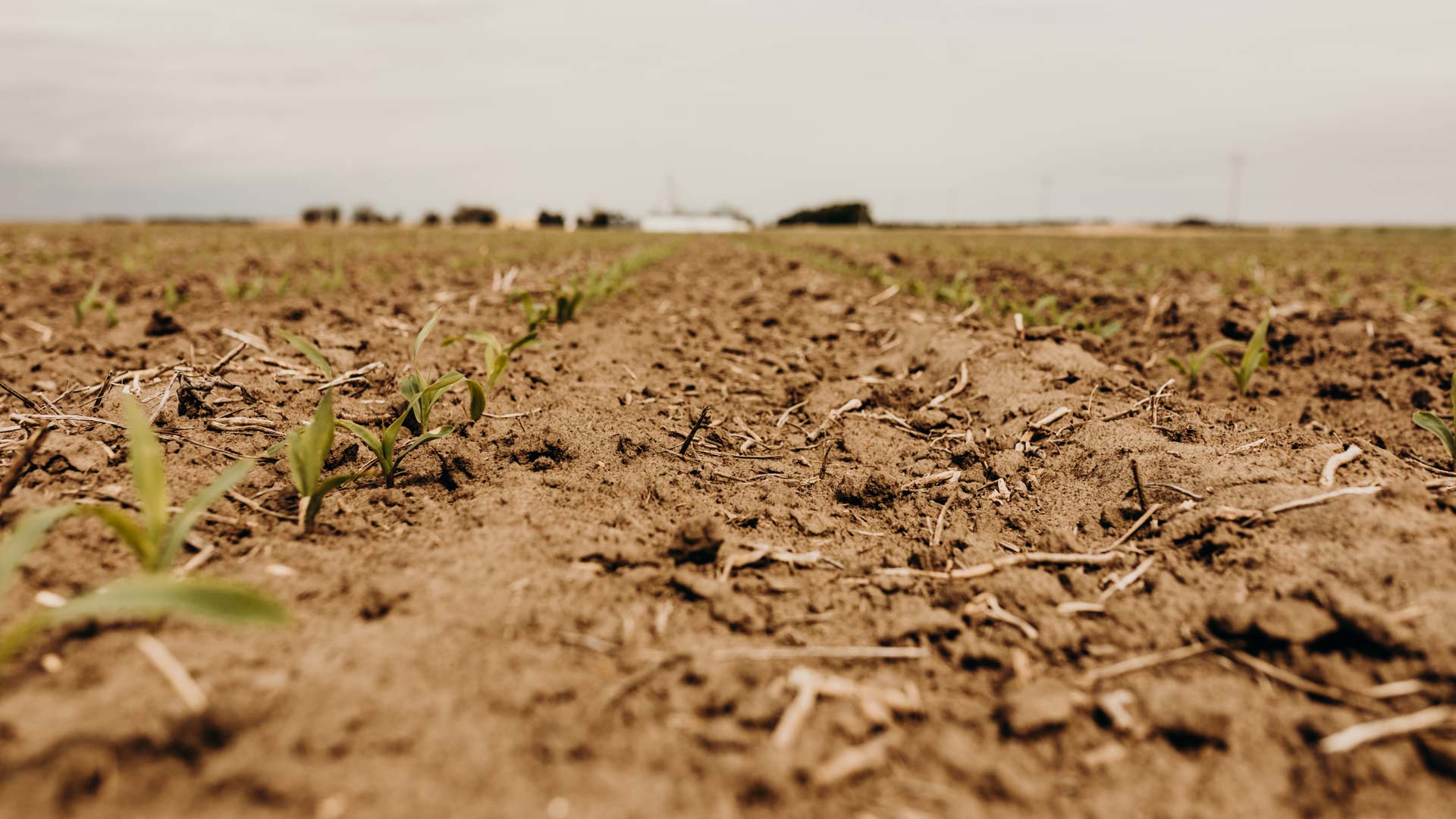



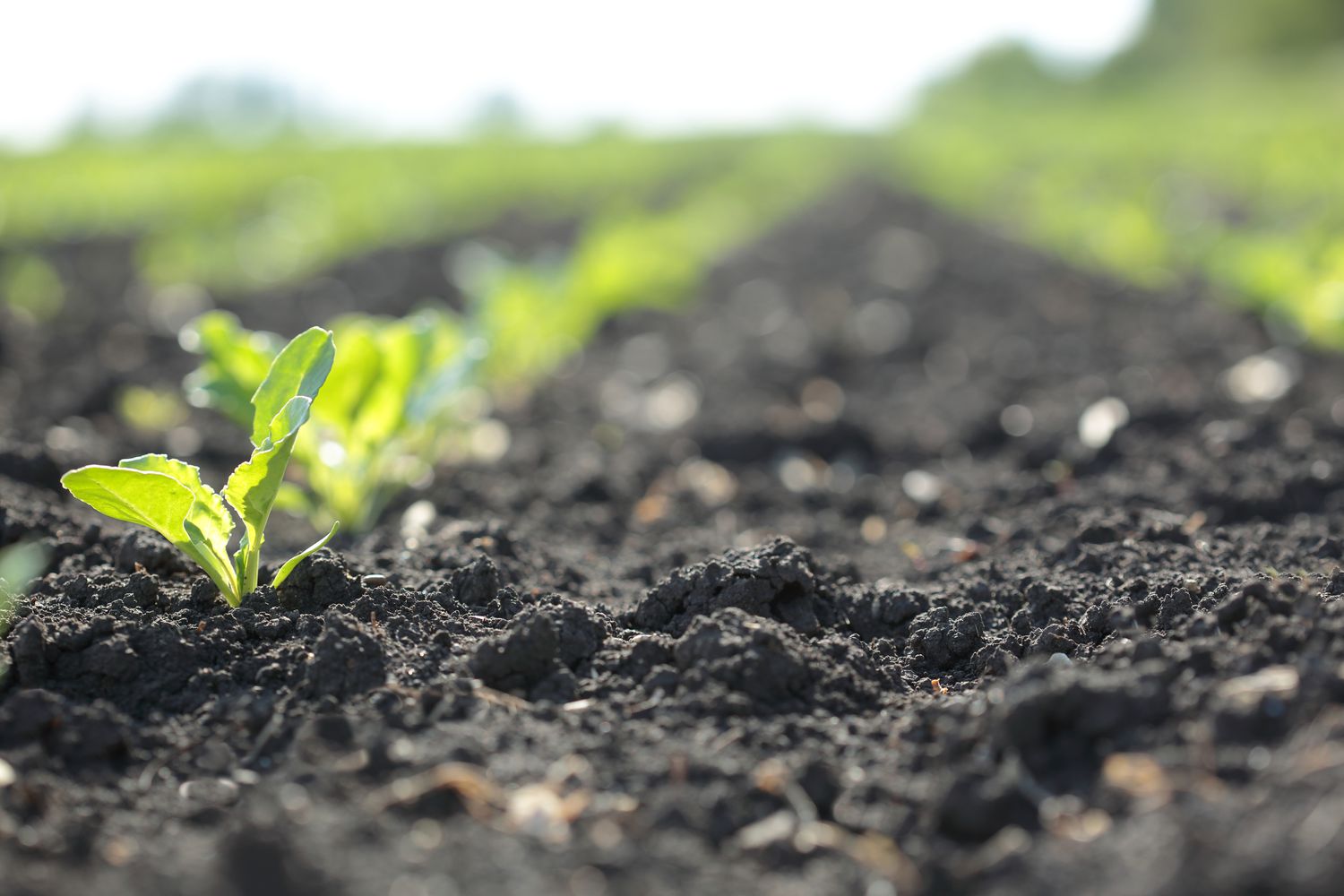


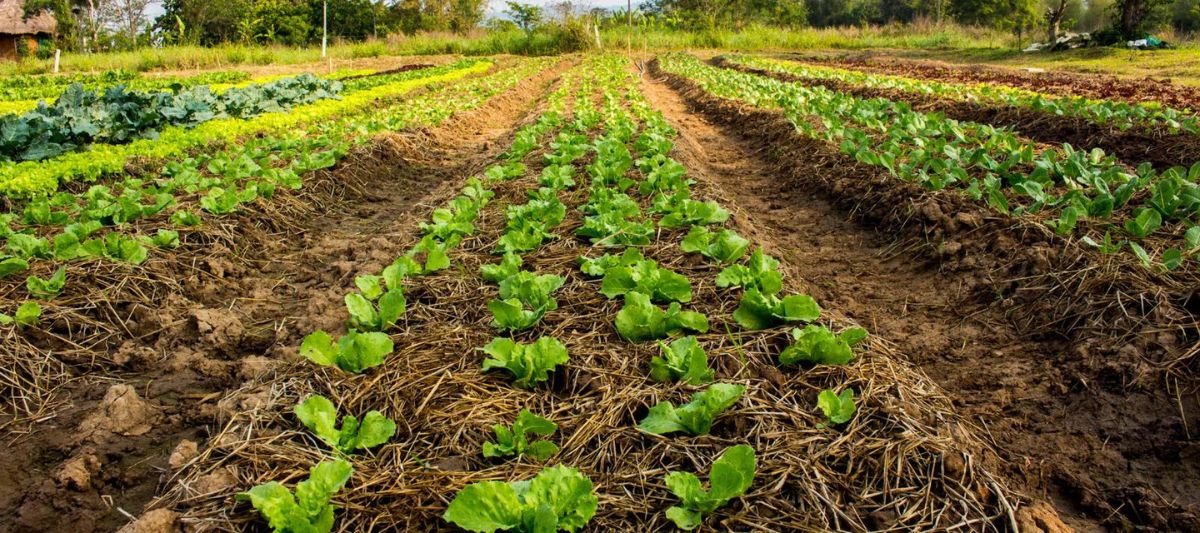




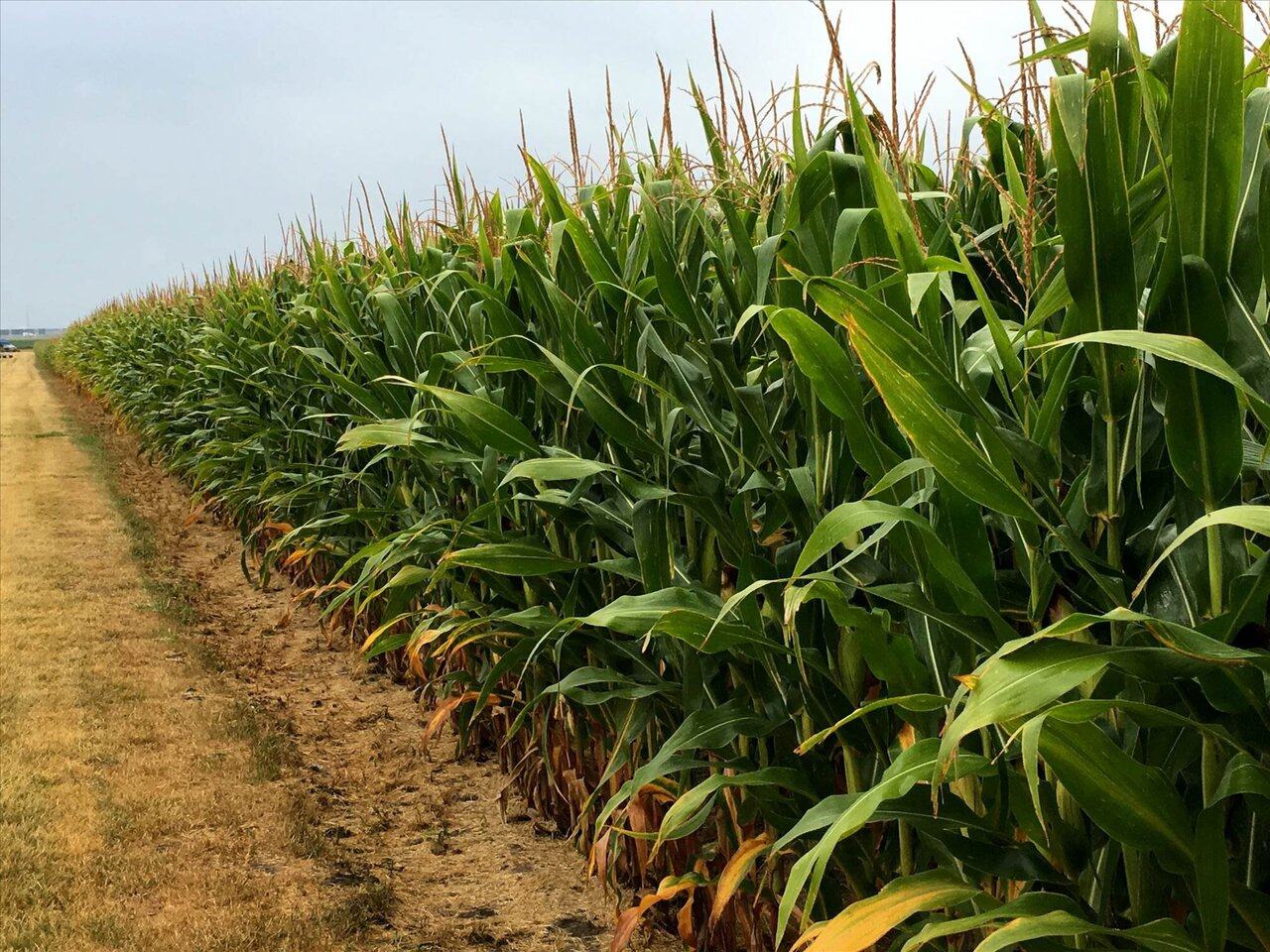

0 thoughts on “What Happens To The Nutrients In The Soil When Crop Rotation Is Used”